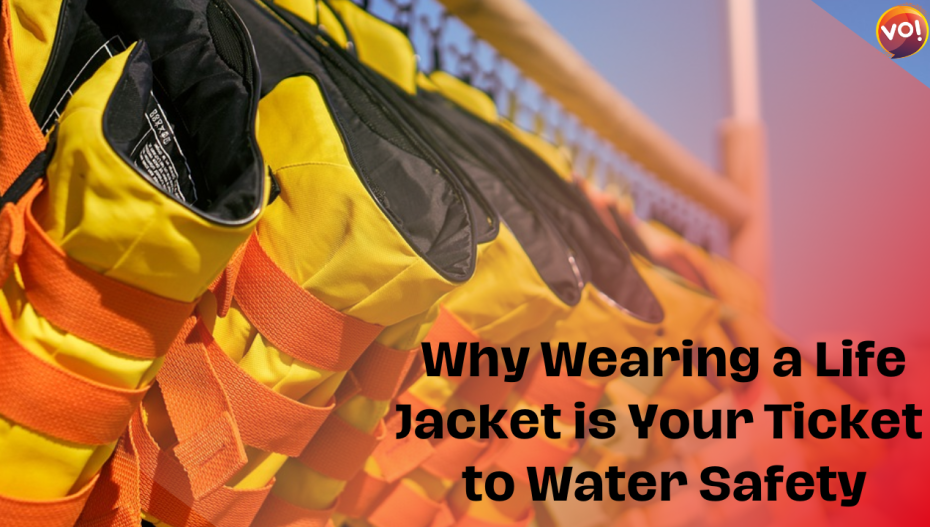Water activities like boating, kayaking, and swimming offer the perfect escape into nature’s refreshing embrace. But amidst the thrill, prioritizing safety is paramount. One of the simplest yet most crucial lifesavers is often overlooked: the humble life jacket.
This article dives deep into the significance of wearing a life jacket, exploring its potential to be your guardian angel in challenging situations. Buckle up and discover why this essential gear should be your constant companion on every aquatic adventure.
Your Guardian of Buoyancy: What is a Life Jacket?
A life jacket, also known as a personal flotation device (PFD), is your knight in shining armor when it comes to water safety. Crafted from buoyant materials like foam or inflatable chambers, this ingenious gear keeps you afloat, preventing the unthinkable tragedy of drowning.
It’s not just for non-swimmers. Life jackets offer invaluable support even to seasoned swimmers, especially in emergencies like accidental falls or sudden exhaustion. Remember, all life jackets must meet minimum safety standards set by organizations like the U.S. Coast Guard to ensure effectiveness and public safety.
Choosing Your Aquatic Ally: Types of Life Jackets
Just like superheroes come in all shapes and sizes, life jackets cater to diverse needs and activities. Here’s a quick rundown of the most common types:
- Type I: Bulky and conspicuous, designed for rough or remote waters, keeping even unconscious wearers afloat.
- Type II: Less bulky than Type I, turns unconscious people face-up in calm inland waters.
- Type III: Comfortable option for kayaking, canoeing, and paddleboarding, providing good buoyancy.
- Type IV: Throwable flotation devices like ring buoys, mandatory on boats over 16 feet.
- Type V: Specialized for activities like kayaking or windsurfing, prioritizing comfort and mobility.
Unlocking Safety: How to Use Your Life Jacket
Treat your life jacket like a superhero suit – wear it right! Ensure all straps are snug and secure, allowing movement without chafing. For inflatable jackets, check pressure regularly. Familiarize yourself with maintenance needs, keeping buckles and straps functional. Remember, a properly worn life jacket is your shield against danger.
Why It Matters: The Power of a Life Jacket
Still debating whether to wear a life jacket? Here are ten compelling reasons to make it your aquatic BFF:
- Survival Hero: It significantly increases your chances of surviving emergencies by keeping your head above water and providing buoyancy.
- Float On: Life jackets offer support and warmth, especially crucial for non-swimmers, helping them breathe easily.
- Beat the Chill: They insulate you, reducing hypothermia risk in cold water.
- Comfort and Freedom: Modern life jackets prioritize comfort and mobility, enhancing your water experience.
- Be Seen, Be Safe: Bright colors make you easily visible to rescuers, maximizing your chances of a swift rescue.
- Impact Armor: They offer protection from injuries caused by falls or collisions.
- Follow the Law: Wearing a life jacket is often mandatory, ensuring everyone’s safety and legal compliance.
- Signal for Help: Bright colors can attract rescuers’ attention in emergencies.
- Budget-Friendly and Portable: Affordable and easy to store, making them convenient companions.
- Peace of Mind: Knowing you have an extra layer of protection allows you to relax and enjoy the water worry-free.
When to Suit Up: Life Jacket Essentials
Always wear a life jacket when working near water. Boats and vessels should have twin-chamber life jackets for everyone on board. In poor visibility, add safety lights. When venturing into deep or open water, regardless of conditions, a life jacket is your best friend. Remember local regulations and weather forecasts – safety first, always!
Forget the roaring instructions and sideline theatrics. Jude Menezes, the quiet man leading the Japan women’s hockey team. Read more.













